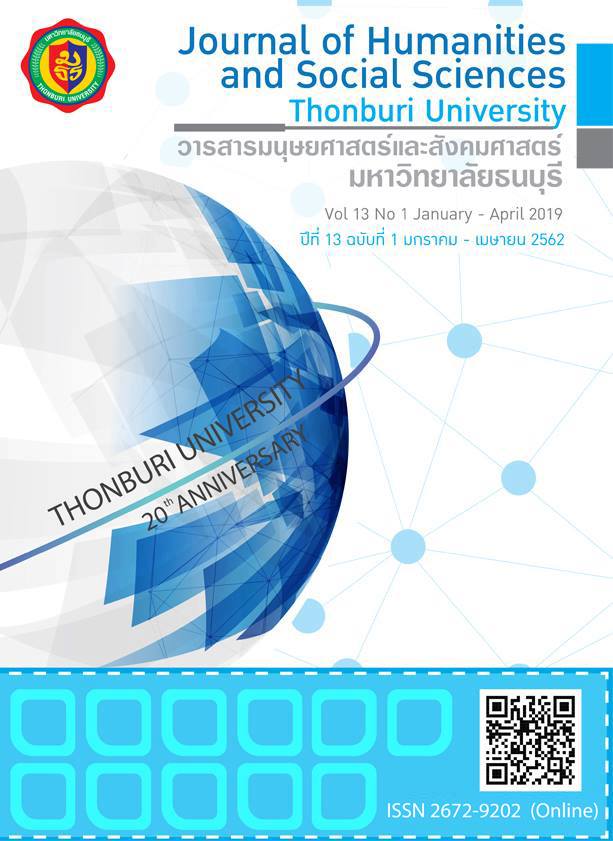THE EFFICIENCY OF SOCIAL MEDIA OF PTT PUBLIC COMPANY LIMITED IN THE CORPORATE IMAGE AND BUSINESS ASPECTS
Keywords:
social media, corporate image, business, activitiesAbstract
This research aimed to study the correlation between social media usage of PTT Public Company Limited (PTT) and its results in corporate image and business aspects of PTT by using quantitative and qualitative research. The quantitative research used questionnaires to collect data from 400 customers who used PTT social media whereas the qualitative research used in-depth interview of 12 PTT customers who were over 5 years social media experts together with content analysis of general social media news about PTT. The results were presented quantitatively and qualitatively together.
The results were found that the customers used PTT social media as a channel to receive information and trusted in this channel at a high level whereas trusted in other channels at a moderate level. As for PTT corporate image, they trusted in it at a high level. As for PTT management and PTT products and services, they perceived them at a high level. As for PTT activities, they perceived them at a moderate level. As for the impact of PTT social media on positive and negative communication, they perceived it at a moderate level. Finally, it was found that the efficiency of PTT social media was positively correlated with PTT corporate image and business through the perception of management, activities as well as products and services.
References
เสรี วงษ์มณฑา. (2547). ครบเครื่องเรื่องการตลาด. กรุงเทพฯ: ธรรมสาร.
Belch, G. E. and Belch, M. A. (1998). Advertising and promotion: an integrated marketing communications perspective. 4thed. Mass: McGraw-Hill.
Dincer, C. and Dincer, B. (2012). Social Media use, Perceptions and Implication. Afyon Kocatepe University, iiBF Dergisi.
Jefkins, F. (1993). Planned press and public relations. London: International Textbook.
Kapferer, J.N. (1997). Strategic Brand Management: Creating and Sustaining Brand Equity Long Term. 2nded. London: Kogan Page.
Kotler, P. (2004). Principles of marketing. United States of America: Pearson Education.
Morley, M. (2002). How to manage your global reputation: A guide to the dynamics of International public relations. NYU Press.
Tugrul, T. O. (2014). Brand Experience Effects on Consumers Social Media Marketing Perception and Brand Value. Journal of Global Strategic Management. 8(2): 39-47.
Wagner, J. A. and Hollenbeck, J. R. (2005). Organizational Behavior: Securing Competitive Advantage. 5thed. Cincinnati OH: South-Western.
Wertime, K. and Fenwick, I. (2008). DigiMarketing: The essential guide to new media & digital marketing. Singapore: John Wiley.
Yamane, T. (1973). Statistics: An introductory analysis. London: John Weather Hill.
Translated Thai References
National Statistical Office Thailand. (2010). Development of Information and Communication Technology in Thailand. Bangkok: Survey Report Bureau of Statistics. (in Thai)
Wongmontha, S. (2004). Marketing. Bangkok: Thummasarn. (in Thai)







